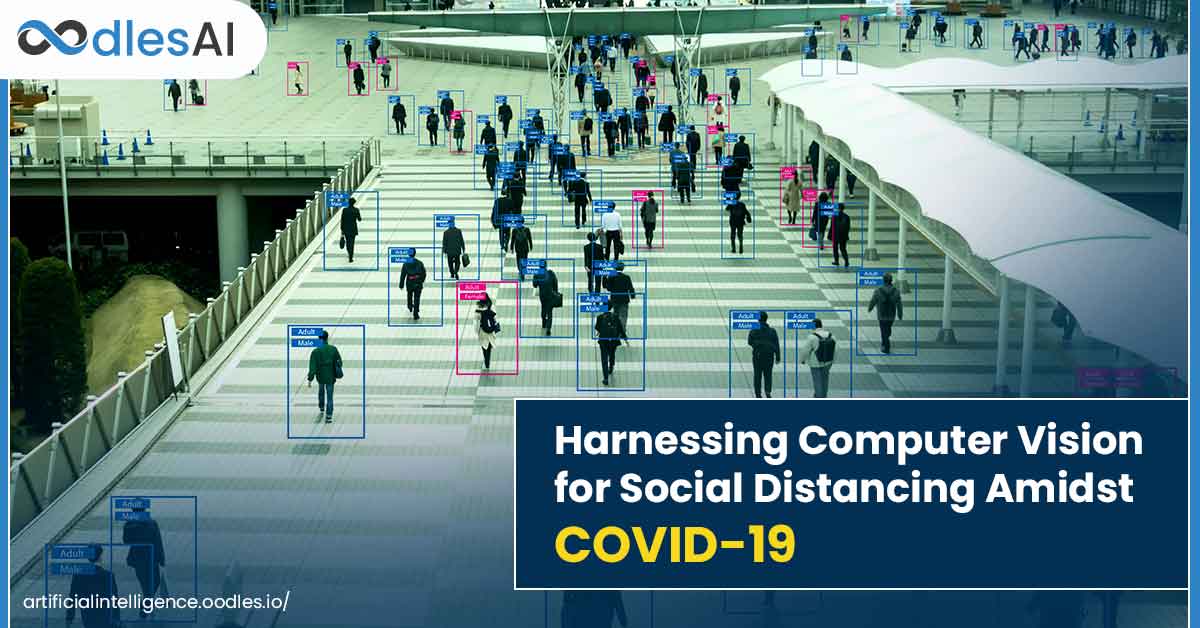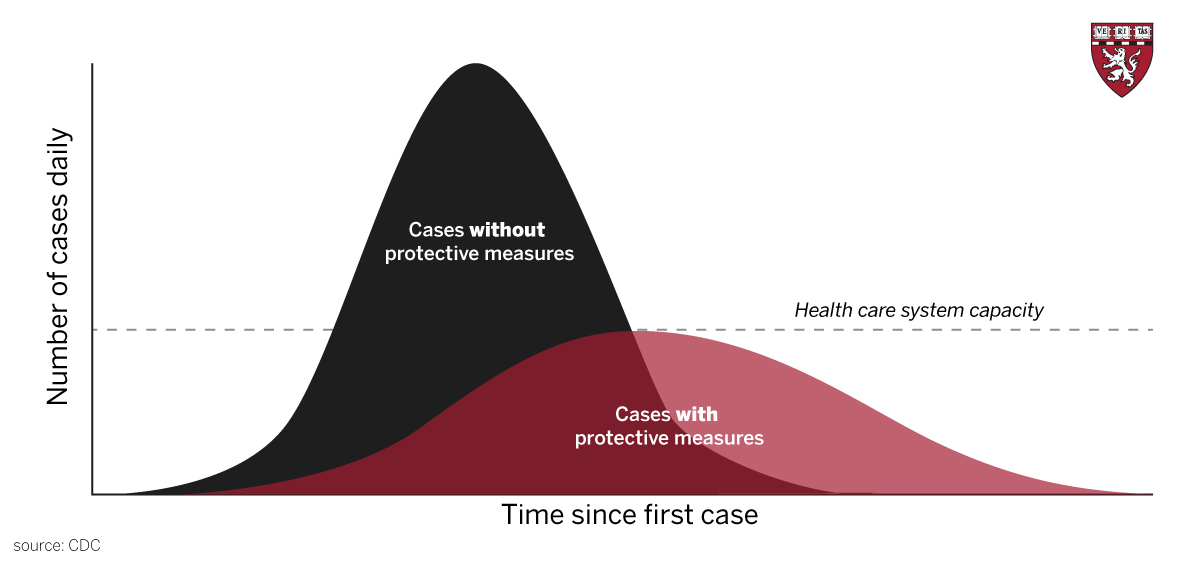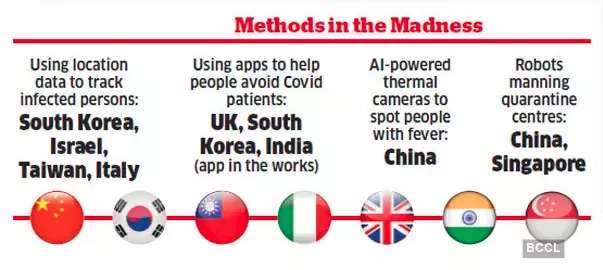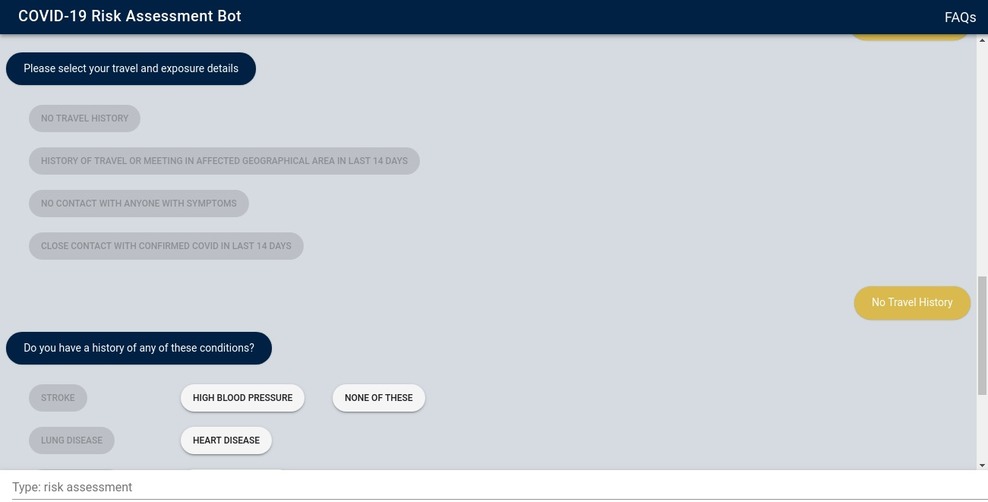Harnessing Computer Vision for Social Distancing Amidst COVID-19
Sanam Malhotra | 28th April 2020

With no vaccine yet in sight, we cannot overemphasize the need for social distancing during the COVID-19 pandemic. To strengthen vigilance and support, artificial intelligence (AI) is acting as the brawns and brains of humankind. Coupled with computer vision services, machine learning models are automating the identification and detection of pedestrians, traffic, and infected patients across cities. In this article, we learn about some emerging AI technologies including computer vision for social distancing enforcement along with other protective measures.
Social Distancing: Need Of The Hour
In the wake of steadily increasing COVID-19 cases, governments and authorities across the globe have adapted social distancing measures. Experts suggest that if there’s one definite way of containing the virus in the face of no vaccine, it is social distancing. Its guidelines instruct people to maintain at least 6 feet of distance among one another and avoid unnecessary congestion in one place.

Harvard University researchers explain how we are able to flatten the curve with protective measures.
However, at ground zero, the measures are easier debated than executed. The implementation of social distancing not only requires continued public support but also vigilant administrations to monitor the scheme. In the face of limited human surveillance capacities, we are always in danger of losing the fight to this deadly virus.
How Computer Vision Technology Enforces Social Distancing
Artificial intelligence technologies such as computer vision can effectively monitor public spaces through data sensors and cameras to track social distancing. The video feeds from around a metropolitan city can be analyzed using deep learning algorithms to monitor traffic and pedestrian congestion.
Alain Labrique, director of the Johns Hopkins University Global who is proactively researching some innovative technology-led solutions to combat COVID-19, says-
“The connectivity we have today gives us ammunition to fight this pandemic in ways we never previously thought possible.”
With algorithmic advancements, we are able to build AI solutions that not only accelerate data analysis but also improve diagnosis across borders. Deep learning models can process trillions of gigabytes of video feeds to monitor public movement around a city, office, and public place. Worldwide, several countries are turning to AI-powered solutions, such as-
a) Location trackers
b) Thermal imaging systems
c) Contactless screening
d) Awareness chatbots, and more to bring this inexorable virus to its knees.

In India, CCTV footage from Kerala’s Pathanamthitta district was used to track down 900 people who came in contact with a COVID positive family, reports the Economic Times.
Efforts to curb the pandemic are constantly evolving with the availability of AI models and analysts. Let’s learn about some effective ways to deploy computer vision for social distancing implementation.
Also read- Improving Diagnosis with Computer Vision Applications in Healthcare
Employing Computer Vision For Social Distancing Enforcement
1) Image and Video Analytics
In an earlier post, we have discussed the AI’s potential in deploying machine learning algorithms for medical image processing tasks. From X-rays to CT-scans, doctors are finding integrated ML software more efficient at recognizing anomalies like polyps and in-bone fractures.
Employing AI for pandemic management involves deep video analytics of data received from critical public spots such as airports and stations. While manual screening methods at entry points increase the risk of contagion, AI offers improved screening solutions that monitor forehead temperatures efficiently. Such solutions combine RGB and thermal cameras to measure each person’s body temperature and alert officials when it captures temperatures beyond normal.

The epicenter of Coronavirus, China is deploying AI-powered thermal cameras to measure individual temperatures to identify those with a high fever.
Under computer vision for social distancing, data analysts are training models to identify excessive pedestrian flow at public places. Moreover, the models can measure the distance between individuals on a real-time basis as shown in a GitHub initiative below-

Also read- Keeping Businesses Afloat With AI During COVID-19 Crisis
2) Drone Technology
Computer vision techniques are efficient at automating drones to fetch key insights and take preemptive actions to mitigate virus transmission. At remote locations, unmanned aerial vehicles or drones can be used for various purposes, such as-
a) Spraying disinfectant to sanitize outdoor surfaces
b) Delivering testing kits, blood samples, and emergency supplies
c) Analyzing the movement of infected patients at quarantine shelters with facial recognition techniques
d) Detecting unmasked individuals and communicating advisory through in-built loudspeakers and surveillance features.
Combating the COVID-19 Outbreak With Oodles AI
During this testing period, the Oodles AI team is harnessing artificial intelligence technologies to innovate protective solutions. As a well-positioned provider of chatbot development services, we have built a diagnostic chatbot to automate the COVID-19 risk assessment process.

The Oodles COVID-19 chatbot receives user inputs such as temperature, travel history, and symptoms via suggestion bubbles. To accelerate the screening process, it generates rapid response.

After analyzing a patient’s responses, the chatbot automatically categorizes the case from low to high-risk conditions. It also issues healthcare advisory and raises alert for high-risk patients. Read more about our COVID-19 diagnostic chatbot features.
With machine learning expertise, we are constantly exploring new opportunities to automate critical COVID-19 protective measures. Our AI team is efficient at facial recognition and deep video analytics with computer vision for social distancing observation. Connect with our AI development team to learn more about our artificial intelligence services for optimizing healthcare and other facilities.



